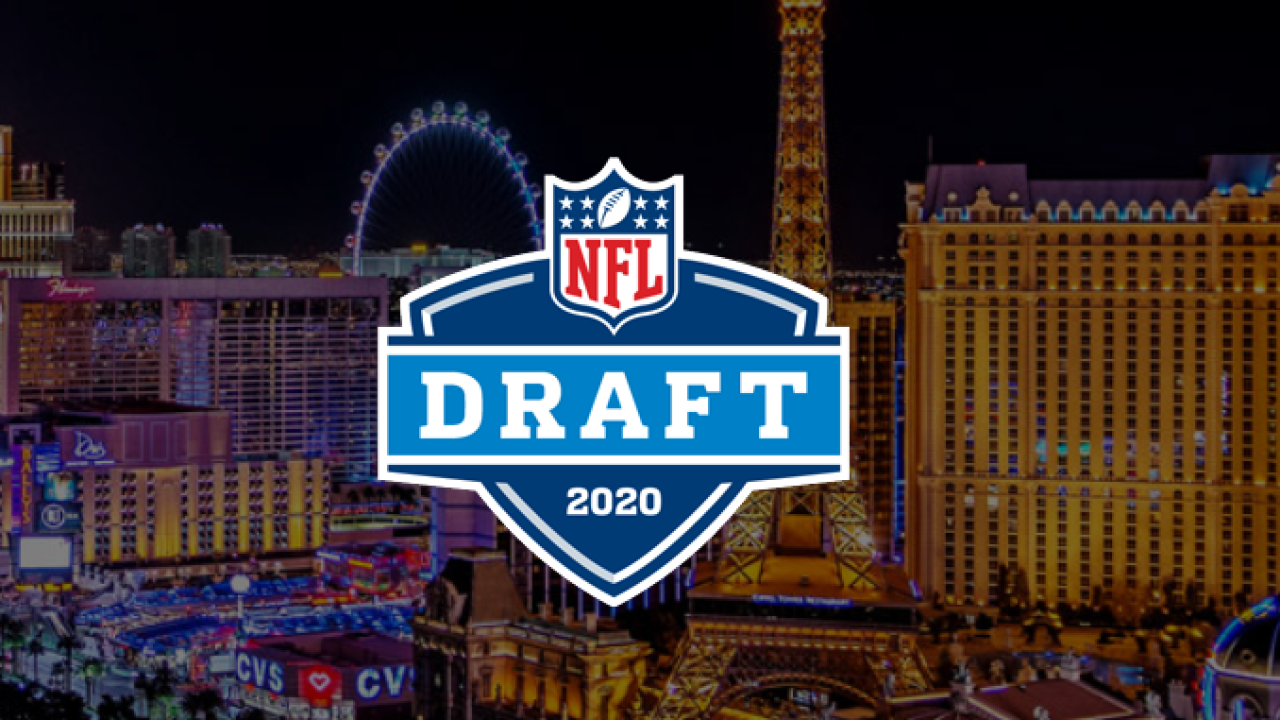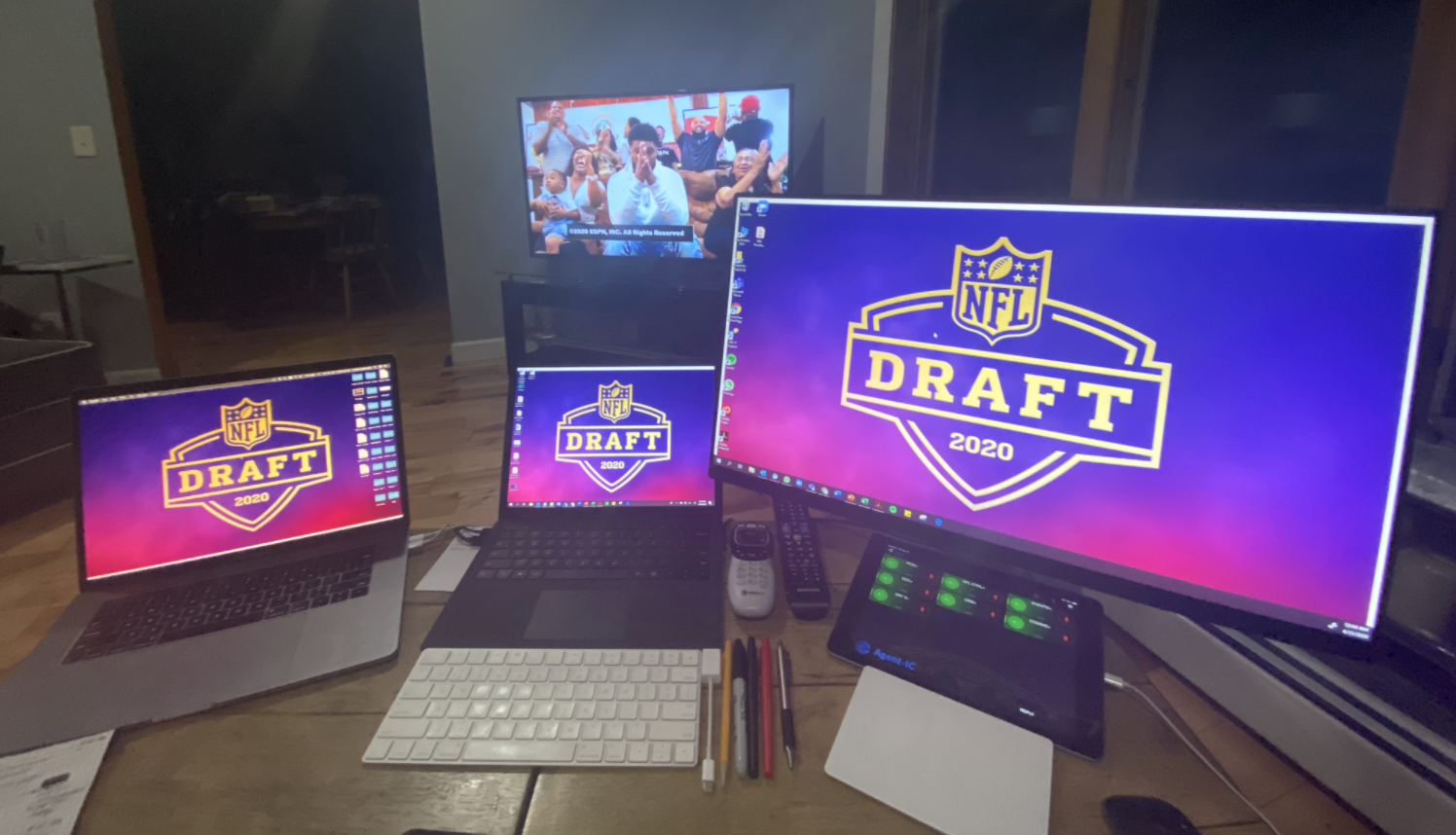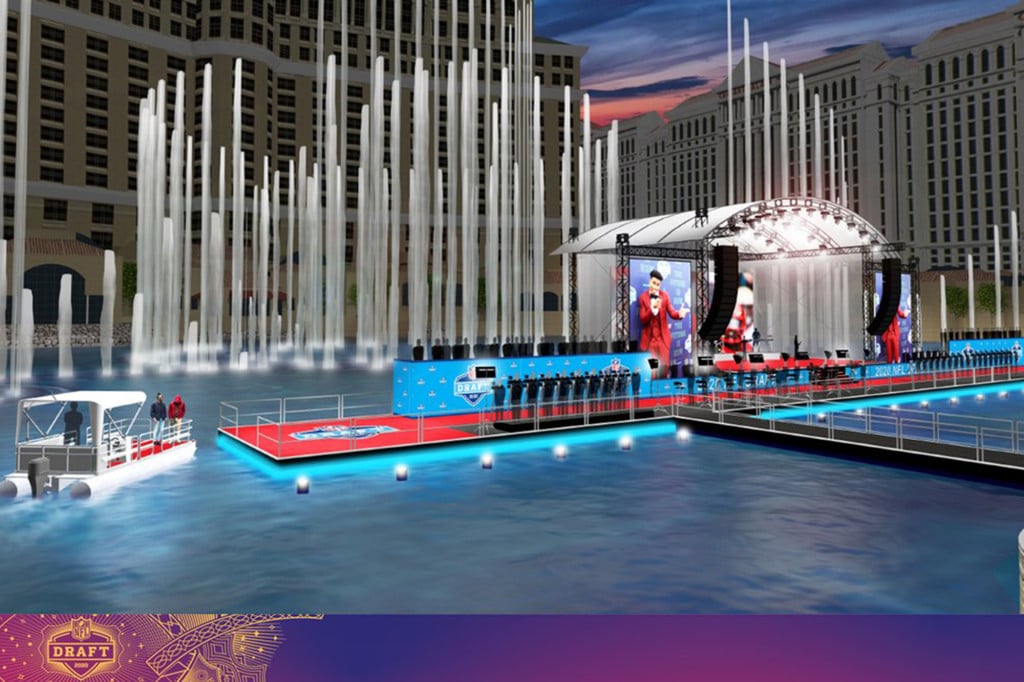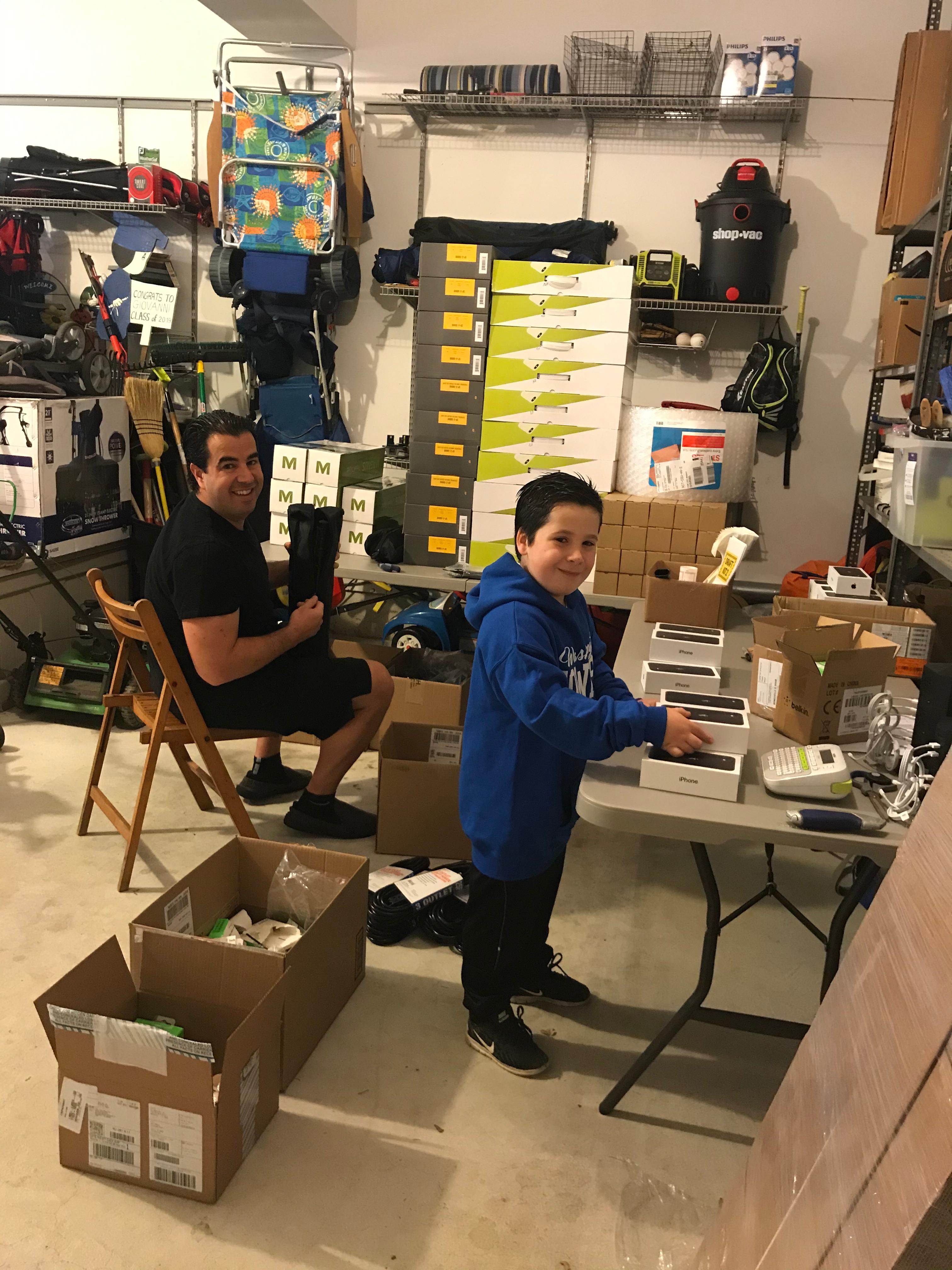INTRODUCTION
Whether you're an NFL fan or not, I have to imagine that everyone in the event world had an eye on this year's NFL Draft.
I also realize many of you event pros have been in some interesting situations, but imagine being a week away from load-in, on an event that expected over 600,000 attendees in Las Vegas, with millions of other fans and viewers watching from home and then having to figure out how coordinate and re-produce everything virtually (in 4-5 weeks).
It's absolutely fascinating to think about the coordination of something like this years NFL Draft. There are so many different constituents you have to manage, communicate with and support, so many technical challenges, scheduling components and health and safety constraints, with no single precedent to follow.
Given that everyone in the event world seems to be trying to figure out an ideal virtual event platform, I was so excited to catch up with the NFL's Director of Major Events, Katie Keenan.
Thankfully Katie offered to give us a first-hand look at the operations behind this year's Virtual NFL Draft. 
Photo Cred: NFL
Katie, I really appreciate you doing this.
My pleasure. It's always great to catch up with you.
Can you start by walking me through the events you work on throughout the year?
Yes, we handle the Super Bowl, Pro Bowl, The Draft, Kickoff, parts of the Hall of Fame game, international games, the big annual league meetings, executive meetings, owner meetings, and a myriad of department meetings throughout the year. That’s from the biggest to the smallest. We split the events team into event strategy and event operations. The event operations team is a split between event execution, back-of-house, and logistical stuff such as hotels. The teams are led by an event strategy lead, an ops lead, a hotel lead, and a fan experience lead.
In a typical year, when do your team start working on the draft?
The planning window is getting longer each year. When it was at Radio City Music Hall, the window was smaller. Right after the Super Bowl in mid-February we would start planning for the draft in late April.
Now we know where the Super Bowl and The Draft are going to be for the next couple of years. That was done on purpose to get ahead of these large events and start planning them further in advance. The Draft and the Super Bowl are the two largest events and we lose all this time from mid-December through February because everyone is focused on the Super Bowl. It creates a challenge to pick up planning for the draft right after because it’s also so big.
We’ve already started laying the foundation for Cleveland which is the 2021 draft and that’s almost a year away and then Kansas City in 2023. Funny enough we left '22 open because we were looking to bid the Draft to a bigger media market, in between the two smaller markets. So now we're able to put Vegas into that slot. Which worked out well.
When did you and your team internally say "Oh boy... we need to start considering the idea that we may have to do some type of virtual draft."?
It was crazy. We were in Vegas for our final planning trip around March 5th or 6th. We were full speed ahead planning the event, 100 people were in town, walk-throughs meeting, not a care in the world. And then on March 12th the NBA suspended their season and everything just kind of fell apart. It was about a week after that that we all looked at each other and we were like, "There's absolutely no way that we're pulling off this draft." It took a little while longer to make it official.
Do you remember when you made that final decision?
We had to make the decision quickly. The draft load-in is insane, it’s a month long process. We’re typically rolling trucks, April 1st or April 8th, so we had to make that decision quickly.
It went from "Okay, can you do something smaller? Can we still bring people?" to "There's no way we can do a big public fan event... " And then "Can we still bring players? Can we still bring the prospects in and do a television show like in Las Vegas?" And then it was like, "No, you can't do that." And then it was like, "You can literally do nothing, so figure out how to do this fully virtually."
Photo Cred: Katie Keenan
Basically you’re saying you had about a month to re-configure and re-plan the NFL Draft?
Seeing that the Draft was slated for April 23rd-25th, that’s about right.
How many people are involved in that decision?
The decision is made by a relatively small team. It’s made by all of the executive team, PR, the medical team, and the government affairs team. The medical team was a big part of this puzzle that isn't usually a big part of what we're doing. So I would say, 30-ish, maybe less than that, people overall. Mostly, just the leadership of the organization.
What was the sentiment of the team at that point?
It was disappointing. We were all really excited about this draft. More so than any other. I will say the Nashville draft was like this. We knew it was going to be good, but it was this unexpected insanely awesome event. Sometimes events are a nightmare to work but come off really well, but Nashville was so much fun and this totally positive experience. My part of the event, the Red Carpet was going to be literally in the Bellagio Fountain, doesn't get much cooler than that. We just felt like Vegas was going to take everything to another level. Everyone was really excited about it. It was going to be at the Bellagio and the coolest thing. I personally was extremely disappointed. But looking back on it now, we were just in the moment, saying "Okay, fine, we're not doing the draft and we have to produce something" but then it starts to set in that you're not doing all these other things that we were planning, and I think that's when things felt worse. However we were so still focused on our job in such a tight timeline, that it almost took getting through that event and coming out that, to be really slapped in the face with the reality of the virus and our community to be like, "Okay, this is really bad and we may not do a live event for a while now."
Photo / Rendering Cred: NFL
As soon as you made the decision to go virtual, what are the first steps you took to rethink that experience and begin the path of executing this new fully virtual experience?
My bosses Jon Barker, the Vice President of Operations and Peter O’Reilly the Executive Vice President of Events and Club Business Development really led the ship. In a normal scenario, everyone knows what they’re doing and builds their plans off other groups. In this case, it was so important for every group to be talking consistently and building the plan together. There was no hub. We hoped we would be able to do it in a TV studio and we found out we couldn't do that. Peter and his team created streams (committees) across the organization and said, "Okay, these are all the things we need to get done, and these are all the groups across the organization that need to be involved in those things."
What’s nice is that it has become a template of what we’re doing for the start of the season and how we’re working in this new world of communicating fully virtually. It’s so important to have the right people on calls and in the meetings.
We built out work streams that included members of different departments and different groups across the league and gave everybody a directive on "Here is what your role is and here is what you need to do," things like on-site operations. On-site operation is a very small piece but it’s still something to think about. You need to think about “Where is the commissioner? How is he getting on TV? Who can be in the house? Communications to the clubs, Social Responsibility and philanthropy, Communications, marketing, and PR built their own work-streams. Each group met individually and then we would all meet. We would all meet on Monday, Wednesday, and Friday at the end of the day to give updates. It was such a short window and since we weren’t in the office we had to have a ton of calls to go over what needed to be done. 
Photo Cred: Katie Keenan
How do you delineate responsibilities between operations and production?
It’s funny we hear those two terms used so much in festivals and tele-events. We don’t really use those words to break down what we’re doing. We just call our team the events department and the ops folks work on every stream. We call the production side the tech side and that’s an extremely important piece.
The Draft is unique in that although it’s this massive live event and television show, it’s also a very serious business meeting for our Clubs, so the whole process has to be confidential and most importantly equal. There has to be parity among all the teams and there’s a lot of rules, regulations, and technology to support it. The draft is always a live event, a television production, and a business meeting. These three pieces have to work together. The event operations team are the best at bringing everyone together even though we weren’t producing a live event. The TV folks know the TV stuff, the IT folks know the IT stuff and the football guys know what the business operations need. The event teams pull it all together and make “IT, you’re going to do this”.
Did you have to source any new partners?
For the most part no, we used existing partners, but in different ways. We brought in only one additional group to help us on the virtual tech coordination side. Their business is pulling in feeds and putting them out to television. A very simple explanation would be taking a video feed from an iPhone and send it somewhere like CNN for a professional looking high-quality video shoot. So that's this thing that exists, who knew, [chuckle].
Other than them, we used a lot of our normal partners, and the same broadcast partners, NFL Network and ESPN. The NFL has their own network which has a whole army of television producers. The show didn't get produced by NFL Network at the end of the day, it was a co-production between the NFL and ESPN. The NFL Network team was a key piece of the puzzle. Our internal IT team was also fantastic. We also used Van Wagner, who is our in-stadium Entertainment Group, for a few items and The Famous Group created the virtual inner circle which was a more fan facing element that we added on.
Did your daily production schedule or structure change?
Yes, it was so much smaller. It was so much easier for us because it’s a TV show. We work with C3 Presents for the overall draft production and we were joking around about how we were going to need about 7,000 porto potties in Vegas and we ended up needing “one” for the Commissioner's house. I remember texting Jake Perry at C3, laughing, saying “What time is the ONE porto-potty getting to the Commissioner’s house”. 
Photo Cred: CBS
What a change from just a few weeks before.
I know, it was bizarre.
So looking at your timeline, it’s now three weeks leading up to the event: How did your timeline get condensed and what were you focused on?
We had to make decisions quickly, which is what our team was responsible for. We can’t talk about iPhone settings for hours. We need to make a decision and get them in the mail. It becomes more about the necessity versus planning. We sent kits to all of the prospects that were going to be on TV. The kit included 2 phones, a light stand, and a microphone. The phones had to get ordered, programmed, packaged up and then mailed out. Once the prospects get the kits, they have to set them up and use them. We had two and half weeks to do all that. So we had to make decisions fast. So the timeline ended up getting condensed, more out of necessity versus planning.
Our partners were also a big piece of the puzzle. The draft delivers so much value to the NFL partners. We had 600,000 people in Nashville last year, now we have zero in person. So how do we deliver value to partners in unique ways. It was “Verizon, can you send us 200 phones?” and “Amazon Web Services can you provide the cloud?” It was really quick conversations of “Send this here and we’ll get them boxed up and sent out”. Everybody came together to get them out. Each person had a set of 10 they were responsible for. People were literally getting them ready on Friday, Saturday, and Sunday to get them in the mail by Monday for an overnight delivery on Tuesday. We have pictures of Nick Annucci from our IT department in his garage and his son is helping him build the boxes. It was just a bunch of people doing random things and figuring it out.

Photo Cred: Nick Annucci of the NFL IT team and his son Giovanni. "Every virtual event platform has a little manual labor behind it".
What were the biggest mishaps that occurred during that point?
Looking back, an events person should have been a little bit more involved with how those boxes were set up. There were some steps that weren’t user friendly and we added things like a media tour after the boxes were sent out. The Zoom app was downloaded to the phone but it was little things like setting up the Zoom account. We tried the phones for the first time and had to make adjustments and send that information out. Overall it was relatively smooth.
I’m assuming there is a level of user error involved as well?
We had a person assigned to each prospect and that person was literally in the house with them talking to a person on our end making sure everything was working. Once we got started we started doing rehearsals on Friday, Monday, Tuesday, and Wednesday. The prospect rep was checking in with them each rehearsal day. If you’re not there to do it, it’s like they are reading a user manual and it becomes more difficult and time consuming.
This is all under the cloud of the Coronavirus, right, so the person in the room has certain requirements. That's gonna be fascinating.
Correct, we did not add anyone to the mix. The prospects had to assign someone who was already in the house or somebody who was going to be with them on draft day. Our message to them was “You can have up to 10 people in your house as long as you’ve all been cohabitating already.” We’re not allowing you to have big draft parties. You need to stay in your home with your family and follow your state guidelines.
So now it’s a day before the draft starts, how has your focus changed?
Our number one responsibility was to make sure that when a player got selected they were prepared to go through the process which included an interview with ESPN, a potential interview with ABC, a call from the commissioner’s house, and then their media tour. That was one of the more complex pieces of it, because all of those things were facilitated through different technology.
The interview with the television broadcast was through a tech platform, the call from the commissioner was from the iPhone, and then the media tour was through Zoom. Luckily, we built it so it could all be done on the same phone in that house. The prospect and the prospect rep only had to deal with one device. We did all the work on our end with the communications and technology to make it seamless for the prospect. All they had to do was press a button.
Five minutes before it goes live, what were you most nervous about from an operations perspective?
I was most nervous about all that could have gone wrong in the player journey. Our responsibility was to make sure the prospect felt like they had an experience similar to what they would have at the draft. There's the excitement when they hear from the commissioner and get to do all these interviews. We wanted to make sure it was a positive experience for the guy who just got drafted.
What was your set up at home like?
I had my laptop connected to a big monitor. They sent me an iPad that had all the radio comms. I had another iPad with the draft order and my cell phone. We were using teams for the mediatory communication and I was using Zoom with two other people from my department who were helping me run the media tour. There was also another Zoom with the leadership team. I also had the draft website up. 
Photo Cred: Katie Keenan "Now that's a virtual event setup"
How were you scheduling the interviews, or was that just happening on the fly?
It was totally on the fly. SiriusXM and Westwood One are our radio partners. They want every interview and know they aren’t going to get everybody. They’re flexible on who they can get. We also have local media for the clubs that want to interview the players. We thought the players were going to start at Sirius and then go on tour after their Sirius interview but it ended up being who’s got someone ready.
We set up individual Zoom for each player and used the waiting room functionality. You could have Sirius and Westwood in the waiting room and the moderator would tell Westwood to take someone else while I take Sirius right now. It was a crash course on Zoom. We had someone on my team whose job was to figure out how to work with Zoom and get each person’s requirements.
What are your recap meetings like?
We’ve put things on hold for a bit. We were so focused on executing the draft, we couldn’t focus on the coronavirus and what’s going on. Once the draft was over, the reality of the virus was almost a slap in the face. We had to put a pause on it.
The biggest takeaway was that there was so much interaction on the social and digital side. We’ve been talking about molding live and virtual, what that means, and how we can do it better. Within the last year and half we built this tremendous social and digital team. They were really able to step up and take things to another level on this. And I think they already were on that path, but this just accelerated it.
I'm in the midst of planning NFL kickoff, which normally is a big live event with 40,000 people, music and sponsor activations. We're in the mode of, "We'd like to do a live event and we're gonna try to do a live event, but there's no way we're gonna get 40,000 people there." We’re still looking at sponsor and partner deliverables. Our thought process is “Let's build a live event that's cool and safe and small-ish, and tie it somehow to a couple of one or two really cool, big virtual things in order to get those eyeballs that we are not getting on the ground.” People and the coaches really loved seeing the players and their families celebrating in their homes. How can we do that more? It was something we never thought of before.
When you look back on this experience, what were the moments that are going to stick with you throughout your career?
The moment when we decided that the only live event portion was going to be in the commissioner's basement. My boss looked at me and said, "You're going take the lead on that." And I thought, "Oh okay, that's scary." Figuring that out was a little crazy. I felt like I was on the television production team even though I was at home in my bedroom in my socks. It was really fun and I still got that adrenaline rush when the event started. We all had a virtual post-event glass of wine from our homes.
Then we got the viewership numbers and that was another moment that felt surreal. Our digital viewership and engagement up by 175%. You’re in your house producing an event and it’s this weird moment where you know everybody is at their house watching it and it was the only thing to watch. It was just crazy.
Obviously, every sports organization is going through something like this now. They're having to think through stuff like this. Maybe not at the scale of the draft, but there's some very large organizations that are starting to think this out. What advice do you have for them as they're thinking about, or planning, or working on a large virtual event like this?
One: Communication really is key to all of this. We sat on two hour calls every night. The technical calls were anywhere between 45 minutes to two hours. There’s no question that was what needed to happen.
Two: You have to be even more thorough than you would be with a live event.
Three: You've got to ask every question, be so much more thorough than you would in a live event format because you're so blind to so many things.
Four: When you’re dealing with technology, you have to take steps to make sure it’s all going to work. You can’t assume it’s set up to work the way you need it to. You have to walk through everything to make sure it’s going to work.
Thank you so much Katie
No problem. Now I'm off to a Super Bowl Meeting.
Of course you are.
-----
LENND, INC
Lennd is a next generation event technology platform that simplifies operations and planning so event teams can work smarter, move faster, and improve their ROI.
To learn why some of the most respected event teams trust Lennd to power their operations and learn more about our virtual event platform sign up for a demo: www.lennd.com



